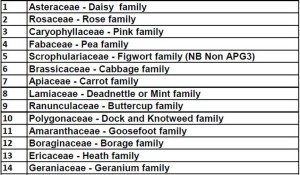Dr M has set his students some homework.
Having already started to look at the top-twenty plant families this term, Dr M has asked his students to construct a key to the top fourteen families of dicotyledons (broad-leaved flowering plants).
Constructing the key will help students to become familiar with the features which characterise and separate the different common plant families in Britain.
There’s nothing more eXtreme than botany, and plants don’t always read the rule books, and so the student keys need to be robust enough to deal with the variation on a theme which plant families often display.
For example, Asteraceae is known for having alternate leaves, but very occasionally a species with opposite leaves pops into view, just to keep you on your botanical toes!
- Asteraceae – alternate leaves
- Asteraceae – opposite leaves
Dichotomous keys are the normal format, but Dr M is keen for students to come up with innovative (even interactive?!) approaches and deliver whatever solution works for them.
In the next lesson students will test their keys with some plant material and have a chance to revise the keys as they learn more about the fourteen plant families.
Once fully road-tested, the whole class can compare notes and decide which of the keys provides the most fool-proof road-map to the families.
Acknowledgement: The featured image shows a montage of keys produced by the MSc class of 2013/2014




